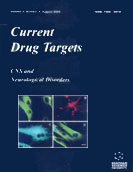Abstract
Pharmacological manipulations of nicotinic transmission have long been the only way to investigate the role of nicotinic acetylcholine receptors (nAChRs) in the brain. More recently, however, the use of genetically engineered knock-out (Ko) and knock-in (Kin) mice has provided a powerful alternative to the classical pharmacological approach. These animal models are not only useful in order to re-examine and refine the results derived from pharmacological studies, but they also provide a unique opportunity to determine the subunit composition of native receptors involved in various aspects of nicotinic transmission. Ultimately, this knowledge will be extremely valuable in the process of designing new drugs that can mimic the beneficial effects of nicotine for the treatment of certain neuropathologies or that may be useful in smoking cessation therapies. In this review, we present recent data obtained from studies of mutant mice that have contributed to our understanding of the role and composition of nAChRs in the central nervous system (CNS). The advantages and pitfalls of Ko models will also be discussed.
Keywords: Nicotinic Receptors, knock-out, knock-in, development, analgesia, addiction, neurodegeneration, schizophrenia
 2
2

















